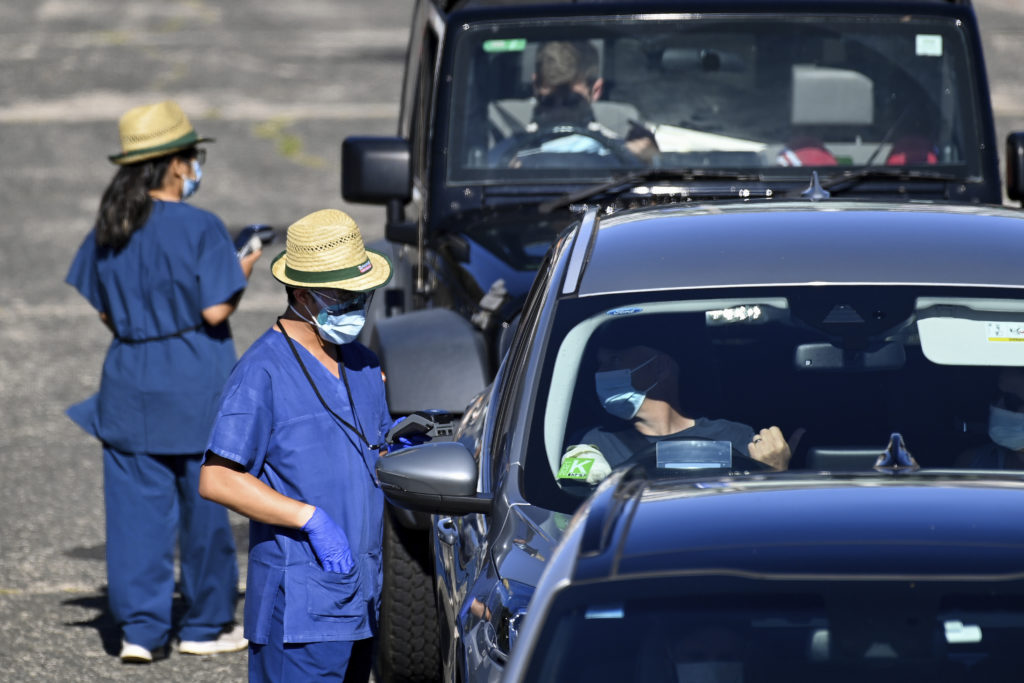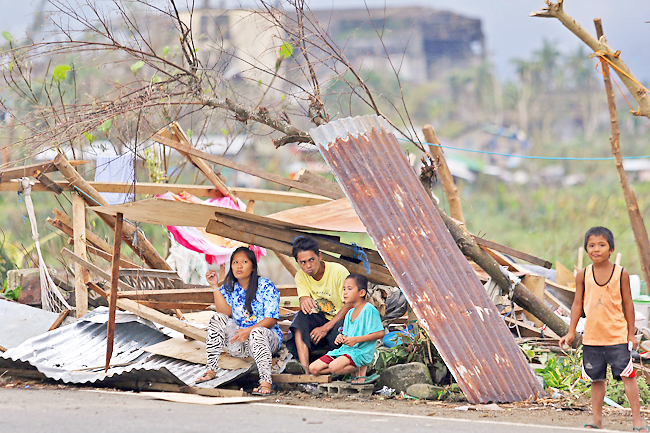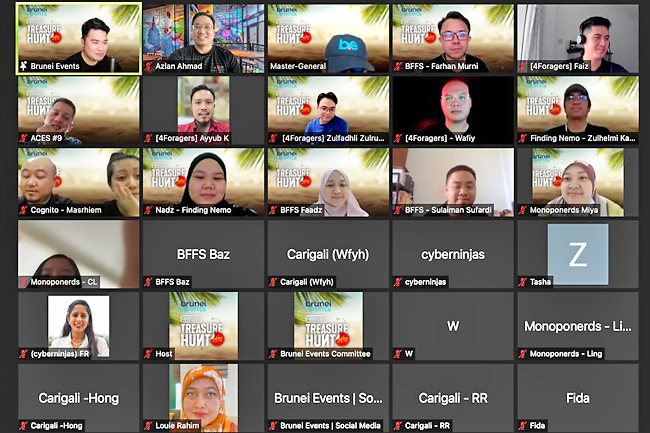ENIWA, JAPAN (AP) – The dozens of Type 90, or Kyumaru, tanks rumbling through recent shooting drills on Japan’s northern island of Hokkaido exemplify the challenge its arms makers face both at home and overseas as the country fortifies its defences against strategic threats.
The Self Defense Force needs the more advanced aircraft and weaponry sold by United States (US) arms manufacturers as Japan’s strategic focus shifts from Russia in the north to the south, where it faces incursions by Chinese fighter jets and naval vessels and North Korean missile launches.
Big Japanese defence manufacturers like Mitsubishi, IHI Corp and Kawasaki Heavy Industries are struggling to sell 20th Century tanks, aircraft and warships. They need to develop better technology to serve a military in the market for unmanned aircraft like Tritons made by Northrop Grumman and Boeing’s undersea Echo Voyager.
Likewise, Japan’s international arms sales never really have taken off. Uncompetitive, with high prices, ageing technology and scant government support, arms makers in Japan increasingly are just withdrawing from the business.
The hefty Kyumaru tanks built by Mitsubishi Heavy Industries debuted 30 years ago and are being replaced with lighter and more mobile armoured vehicles that can travel on public roads and or have amphibious capabilities, including American amphibious assault vehicles.



“People may think Japan has advanced technology and it can quickly catch up with others and start selling equipment if it only gets serious, but I think that’s wrong,” said expert on defence issues and professor at Hokkaido’s Takushoku University Heigo Sato.
“The problem is, Japan’s defence products are not first grade. Nobody is interested in buying second- or third-grade products at higher prices,” he said.
Japan created its own Acquisition, Technology and Logistics Agency in 2015 to try to energise the sluggish domestic defence industry and promote joint technology research, development and sales with friendly nations. But profits have dwindled at home, as the government, instead of promoting sales, increased big-ticket purchases from the US.
Japan is the world’s 12th largest arms importer, with a 2.2-per-cent global share. Most purchases are from its ally the US, according to the latest survey by the Stockholm International Peace Research Institute, a global research organisation.
A large and growing share of the JPY2 trillion (USD17.7 billion) annually in equipment purchases by the Defence Ministry are made through the US Foreign Military Sales (FMS) programme. They more than tripled from JPY190.6 billion (USD1.7 billion) in 2014 to JPY701.3 billion (USD6.2 billion ) in 2019, when Japan placed orders for F-35 stealth fighters, missile interceptors and other expensive equipment to reinforce its defences against China and North Korea.
Haggling over expensive American jets and other equipment has slowed progress on revamping the nation’s defences, Defence Ministry officials said.
Japan has negotiated the cost of upgrading dozens of F-15 fighter jets, which had doubled from the initial US estimate, down to JPY397 billion (USD3.5 billion) from JPY552 billion (USD4.8 billion). To cut costs, Japan switched to domestic-made shorter-range air-to-surface standoff missiles from the initial plan to use US long-range anti-ship cruise missiles, among other revisions, they said.
Army officials at the Hokkaido drills said they’d take whatever equipment they can get. One official joked that his camouflage uniforms were surely still Japanese made.
Japan’s total defeat in World War II, when it tried to conquer much of Asia, has left many Japanese wary of military buildups. The postwar constitution limits use of force to self-defence, and a ban on arms exports was only lifted in 2014.
Moreover, Japanese scientists tend to be reluctant to engage in research and development of technologies that can be used for military purposes.
Since the Acquisition, Technology and Logistics Agency was launched, Japan has sold just one finished product – a surveillance radar – to the Philippines. It first gave away five used TC-90 training aircraft along with pilot training and 40,000 items of parts for UH-1H multipurpose helicopters.
In 2016, a possible breakthrough sale of Soryu-class submarine technology fell through when Australia chose France to develop 12 diesel submarines. That USD65 billion contract recently was scuttled when Australia switched to nuclear submarines under the AUKUS pact with Britain and the US.
Negotiations to sell about a dozen US-2 ShinMaywa Industries sea planes to India have been held up by pricing disagreements. Japan’s attempts to export a radar to Thailand and frigates to Indonesia also ended unsuccessfully.
As a latecomer, Japan lacks the marketing and technology transfer expertise of the US, with its FMS programme, and other major exporters.
“Japan needs to be more competitive, more assertive and also be more willing to engage with customers in the marketing and promotion of defense platforms,” principal of Indo-Pacific research and analysis at the Janes Jon Grevatt told a recent online event.
The government and the industry haven’t entirely given up. Japan is developing its own long-range surface-to-air cruise missile, and as China’s military buildup now extends to cyberspace and outer space, the Defence Ministry has begun pushing for research and development of artificial intelligence-operated autonomous vehicles, supersonic flight and other “game-changing” technologies.
Experts said Japan should accelerate work on drones, satellite constellations and technology against electronic attacks. To fund such research, the ministry requested a record JPY291 billion (USD2.55 billion) budget for the year beginning in April 2022, up 38 per cent from this year.
Japan is also pursuing joint development of its next-generation F-X fighter jet with the US and Britain to replace its ageing fleet of F-2s by around 2035. Japan and Britain recently announced plans to jointly develop a future fighter aircraft engine demonstrator and to explore work on other air combat technologies and subsystems. The project includes Japan’s Mitsubishi and IHI and Rolls-Royce and BAE Systems in the United Kingdom (UK).
It’s a race against time as defence contractors drop out.
Japan Business Federation Senior Manager for the Defence Industry Yu Yamada said it has 60-plus member companies with defence-related operations, down by about 10 in recent years.
Komatsu Ltd, a leading construction equipment manufacturer, stopped developing and making armoured vehicles after upgrades failed to meet Defence Ministry requirements. Komatsu, once the seventh largest supplier, now only maintains existing fleets it supplied. It still makes ammunition.
In March, Mitsui E&S Shipbuilding Co sold its warship unit to Japan’s top contractor Mitsubishi. Daicel Corp, a major electronic and chemical material maker and supplier of warplane ejection seats, is dropping its unprofitable defense business to put resources elsewhere.
Sumitomo Heavy Industries stopped making 5.56-millimetre machine guns, citing a bleak long-term outlook.
If the trend continues, both the military and the defence industry could face supply problems, higher costs or quality concerns, Yamada said. “Supply chains cannot be reconstructed in just one to two years. The industry is facing a rather difficult situation,” he said.
In an emailed statement, the Acquisition, Technology and Logistics Agency acknowledged that keeping a domestic defence industry base was “a challenge” as companies withdraw.
“We must ensure businesses are succeeded smoothly so that the technology of key suppliers won’t be lost in case of withdrawals.”











